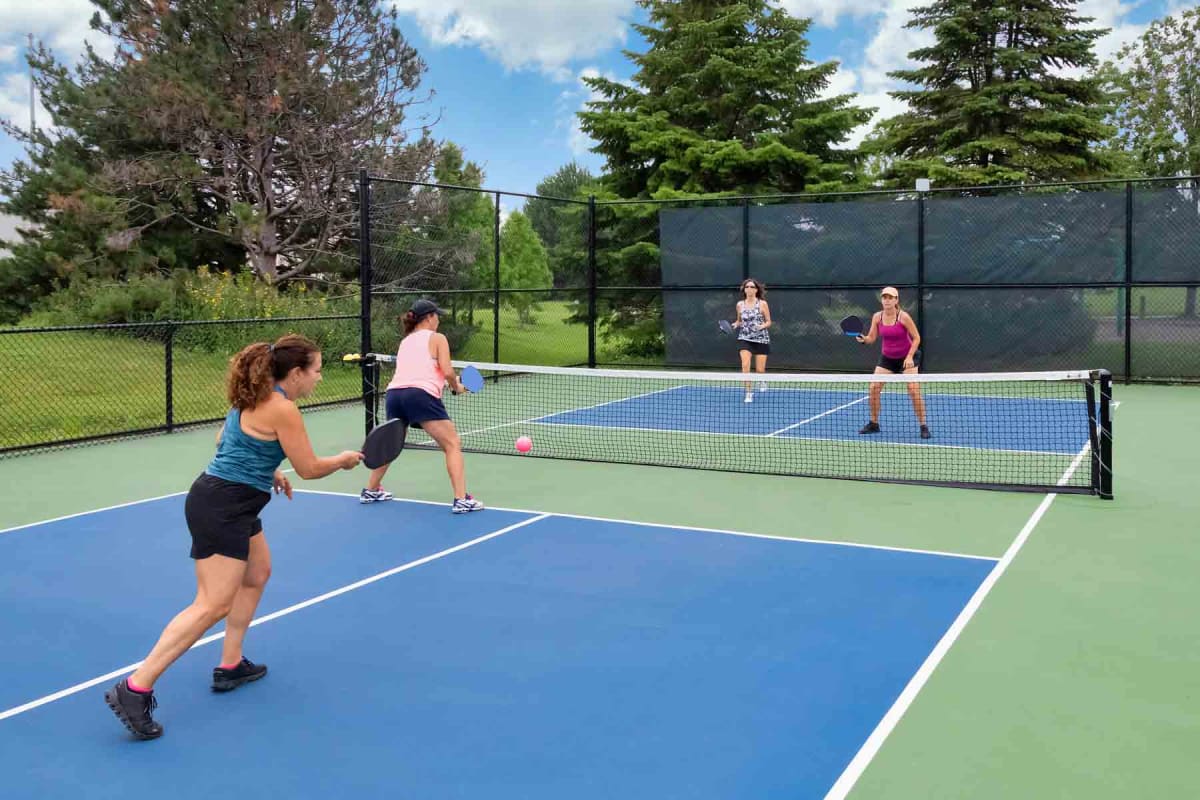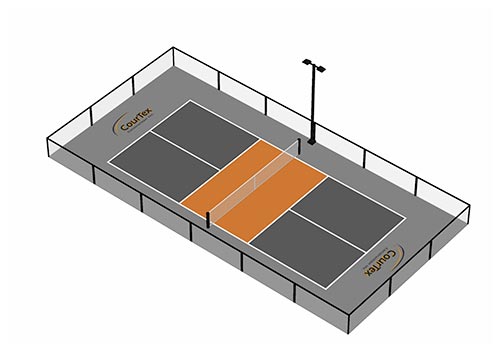Pickleball Court Construction-- Necessary Tips for a Resilient Court
Pickleball Court Construction-- Necessary Tips for a Resilient Court
Blog Article
Sustainable Practices in Pickleball Court Construction You Must Know
As the appeal of pickleball continues to increase, so too does the requirement for sustainable practices in court building. The effect of these methods expands much beyond the court itself.
Choosing Eco-Friendly Materials
Selecting environment-friendly products is a crucial step in the construction of sustainable pickleball courts. The choice of lasting products not only reduces ecological effect however additionally enhances the long life and performance of the court. Trick materials include reused rubber for the surface area, which offers superb toughness and shock absorption while drawing away waste from landfills.
Additionally, using in your area sourced materials lowers transport discharges and sustains regional economic climates. Pickleball court construction. Making use of indigenous woods for secure fencing and seats can give a lasting aesthetic while making certain resilience against the aspects.
Including absorptive materials for court foundations can further contribute to sustainability by enabling natural water drain and lowering runoff. These options not only shield local ecosystems yet additionally promote much healthier play settings.
Efficient Water Drainage Solutions
While the choice of environment-friendly products is vital, executing effective drainage solutions is equally crucial for preserving lasting pickleball courts. Proper water drainage not only protects the court surface from water damage however likewise lessens disintegration and overflow, advertising environmental honesty.
Effective drainage systems can include absorptive paving, which enables water to infiltrate the ground instead than pooling externally. This minimizes the possibility of standing water, which can result in mold and mildew and other upkeep concerns. In addition, integrating tactically put drainage channels and swales can direct excess water far from the court location, making sure a dry having fun surface area and stopping soil erosion.
Utilizing indigenous plant life in the landscape design around the courts can better improve drainage by absorbing excess water and lowering runoff. These plants need less irrigation and advertise biodiversity, lining up with sustainable practices.
In addition, it is critical to consistently preserve the drainage system to guarantee its lasting performance. This consists of clearing up particles and monitoring for obstructions. By focusing on effective water drainage solutions, pickleball court builders can considerably add to the sustainability and long life of the facility, eventually benefiting both players and the environment.
Energy-Efficient Lighting Options
As the need for pickleball remains to grow, integrating energy-efficient illumination options right into court style has come to be increasingly crucial for sustainability. Traditional illumination systems frequently consume too much energy, contributing to greater functional costs and environmental impact. Consequently, embracing contemporary, energy-efficient technologies is crucial for both new buildings and improvements.
LED (Light Emitting Diode) lighting stands apart as a leading choice because of its long life and energy financial savings (Pickleball court construction). Contrasted to traditional illumination, LEDs use approximately 75% less energy and can last up to 25 times much longer, considerably reducing maintenance expenses. Furthermore, the directional nature of LED lights reduces light contamination, guaranteeing that illumination is focused on the court instead of surrounding locations.

Sustainable Surface Area Alternatives
Exploring lasting surface alternatives for pickleball courts has gotten traction among gamers and contractors alike. The focus on environment-friendly products not just aligns with the growing environmental awareness however likewise improves the performance and resilience of the courts.
This material supplies outstanding shock absorption, lowering the threat of injuries for gamers while promoting sustainability. These tiles are simple to install and replace, and their versatility allows for various court setups.
Natural lawn courts are likewise emerging as a sustainable choice, advertising biodiversity and reducing the warm island result. However, they require normal upkeep and water, which might not align with all sustainability objectives.

Water Conservation Strategies

One more reliable technique includes the installation of rainwater harvesting systems. These systems collect and store rain for usage in maintaining court surfaces and landscape design. This method not just preserves drinkable water however likewise reduces dependence on local resources.
Additionally, employing drought-resistant landscaping around the courts is important. Native plants need less water and are better adjusted to neighborhood environment problems, thus lowering total water intake. Additionally, making use of effective irrigation systems, such as drip irrigation, makes sure that water is provided straight to plant origins, decreasing dissipation and waste.
Verdict
Incorporating sustainable techniques in pickleball court building significantly adds to environmental preservation and source efficiency. check this site out By focusing on these techniques, the construction of pickleball courts can line up with wider environmental objectives while promoting durability and functionality within areas.
As the appeal of pickleball continues to climb, so too does the demand for sustainable techniques in court building.Picking environmentally friendly products is a crucial action in the construction of sustainable pickleball courts. By focusing on energy-efficient lighting options, pickleball court constructors can contribute to a more sustainable future while fulfilling the needs of stakeholders and gamers alike.Integrating lasting surface area options not only improves the efficiency of pickleball courts however additionally paves the way for applying reliable water preservation techniques.Including sustainable practices in pickleball court building dramatically contributes to ecological preservation and resource effectiveness.
Report this page